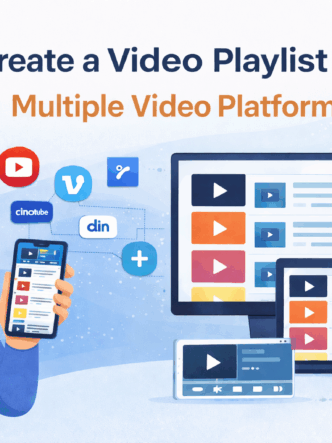The training and development field has evolved significantly over the past few years and is likely to change even more in the next decade. The pandemic, new technology, and a move to remote and hybrid work are some forces driving change. The shift to virtual training during the pandemic showed that it could work just as well, if not better, than in-person training.
Various trends are shaping the nature of training. As new technology keeps emerging, employees have to learn new skills. Mobile friendliness and accessibility have become more important than ever before. Interactive videos, online quizzes, group chat, and other elements are being introduced to increase engagement. Personalization is allowing employees to receive training customized to their specific needs.

The rise of AI-powered personalized learning
Personalized recommendations: L&D professionals need to understand why employees want to learn so they can motivate them. Personalized training is valuable to them professionally and personally. AI algorithms can analyze an employee’s career goals, performance data, and feedback. This means they can receive personalized recommendations on skills they need to develop to advance their careers.
Identify skills gaps: As technology advances more employees are going to need reskilling and upskilling. AI-powered online employee training platforms are likely to play an important role in identifying skills gaps and providing training to address them.
Create personalized learning paths: The use of machine learning and AI predictive analytics is ending the days of one-size-fits-all education. Data analysis provides insights into the progress, learning patterns, challenges, and preferences of employees. This enables the creation of individualized learning paths that enhance engagement and comprehension.
Increase accessibility: AI tools can help make training more accessible. For example, they can automatically generate subtitles and transcriptions for learners who are hearing impaired or speak a different language.
Adapt pacing and difficulty: AI-powered platforms can adapt the pacing and difficulty levels of learning. For example, they can algorithmically adjust difficult content based on learner behavior.
Automation and its impact on corporate training
Corporate training is essential for any business that wants to retain employees. Finding time to train employees can be challenging. The fact that many of them now work remotely or in a hybrid work environment creates even more of a challenge. Automation in the workplace refers to using technology to perform repetitive, time-consuming tasks. Corporate training technology that allows for automation has many benefits.
Streamline training programs: Automation can streamline training programs. It allows each trainee to learn new skills at their own pace. When they complete a module, the next one becomes available automatically. They can complete tests and learn skills at any time and from anywhere. Having full control over the learning process boosts convenience and increases engagement.
Reduce administrative tasks: A significant amount of mundane administrative work is necessary for training programs. This may include transferring files, generating records, and tracking progress. Tasks such as these are easy to automate which creates time for more meaningful activities. Automation tools can generate assessments based on uploaded course content. This means employees can quickly receive feedback on where they are going wrong and need to improve.
Provide continuous feedback: Providing constant feedback throughout every part of the training process is essential. In businesses with hundreds of employees, this is impossible without the use of automation. Automated feedback can help to reassure employees that they are on the right track.
Scale up training programs: When training programs are automated and there’s less administrative work and record-keeping, they are easier to scale as the workforce grows.
Automating employee training means HR professionals don’t have to organize training from scratch over and over. The system can repeat the same training more than once, such as an onboarding program for new hires. Automation can help to ensure that each employee has access to the right training at the right time.

The role of data and analytics in employee development
To ensure that training is effective and delivers good results, training analytics are essential. The Cincopa home page offers information about all its solutions, including its advanced analytics. They help to track learner progress, identify skill gaps, and predict future training needs.
Training analytics involves the collection, analysis, and interpretation of the data related to training programs. Meticulously tracking and assessing various training activities can offer the following benefits.
- Understanding how employees learn and what they retain are insights that are necessary to make informed decisions about how to improve their learning.
- Tracking employee engagement in training gives insights into the challenges or barriers they may encounter. The Cincopa platform has useful dashboards and video heatmaps. These give useful insights into the performance of individual videos and employee behavior when engaging with videos. A heatmap uses different colors and shows where employees rewatch, skip, or drop off videos.
- When L&D teams can identify which training is most effective, they can focus resources on programs most likely to achieve results. This helps to reduce training costs and improve effectiveness.
Using training analytics can turn training programs into strategic drivers of employee growth. This in turn can have great benefits for an organization due to an increase in productivity.
Preparing for the future with online training platforms
The future of employee training will include adopting future-proof online platforms. Cincopa is a cutting-edge video hosting platform that incorporates many forward-thinking features. These include ease of use, interactive features, collaborative features, scalability, security, and advanced analytics.
Synchronous and asynchronous learning: Online platforms today deliver both synchronous and asynchronous learning. Live streaming can make learning more interactive and engaging. Video-on-demand offers continuous learning from anywhere at any time. Asynchronous video messaging is useful as it allows for communication but doesn’t require both parties to be present at the same time.
Interactive features: Features such as polls, surveys, and quizzes allow for feedback and adaptation of learning to individual needs and preferences.
Gamification: Gamification in online learning enhances engagement and motivation. This may include elements like rewards, challenges, and progress tracking. These elements can encourage trainees to stay motivated.
Collaborative learning: Online learning platforms increasingly offer features that encourage collaboration between trainees. This may include peer-to-peer learning, discussion boards, and group projects.
Strong security: With increasing cyber threats and the theft of private and personal information, online platforms need to offer strong security measures. The Cincopa platform offers encryption, two-factor authentication, Single Sign-On (SSO), and other cutting-edge security features. It also has strong user permissions that prevent unauthorized access to content.
Virtual reality (VR) and augmented reality (AR): In the future, these technologies will provide immersive and interactive learning environments. With VR simulations of real-world scenarios, trainees can practice their skills and explore concepts in a practical way. For training in high-risk environments where safety is paramount, this is a cost-effective training method. It can ensure trainees are up to speed before having to apply training in a real environment for the first time.
Blended learning: Blending offline and online learning is becoming more popular. A combination of in-person and online training can offer a well-rounded approach that is both flexible and hands-on.
Microlearning: The microlearning approach is proving effective. It provides trainees with bite-sized content they can easily consume and apply in the moment.
Skill-based, lifelong learning: Employees will need to keep learning new skills throughout their careers to keep up in a rapidly changing workplace. Skill-based learning caters specifically to evolving needs and supports a journey of lifelong learning.
Conclusion
The future is full of opportunities and challenges, from the use of AI to virtual reality. L&D efforts are a critical business function in rapidly evoking workplaces. Making the most of training and development requires a robust online platform. Cincopa integrates advanced technologies to support evolving training needs.








